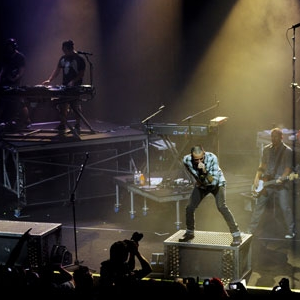Rock pop music may be a kind of common music with an impressive vocal melody usually instrument dominant by guitar, drums, and bass. Several types of rock music additionally use keyboard instruments like organ, piano, mellotron, and also, later, synthesizers. Some different instruments also commonly used like harmonica, harp, violin (for example in some art/classic rock band as Kansas) , flute (trademark of Ian Anderson of Jethro Tull, Peter Gabriel of Genesis and some others), banjo, melodica, timpani, etc. Rock pop music normally encompasses a sturdy back beat, and infrequently revolves round the guitar. They could be solid electrical, hollow electrical, semi hollow or even acoustic guitar.
 |
| Kansas |
Rock pop music has its origin in Forties and Nineteen Fifties rock and roll and rockabilly, that developed from blues, country music and different influences including some traditional folk music or even jazz. The All Music Guide opines that rock and roll in its purest kind only has limited of 3 chords that progressing in a strong, insistent back beat, some distorted or piercing guitar sound and a catchy melody. Of course this is not always the case with all existing kind of rock music nowadays.
 |
| Ian Anderson of Jethro Tull |
 |
| Peter Gabriel of Genesis |
Most of the rock bands incorporates a guitarist, lead singer, bass guitarist, and drummer, forming a quartet. Some bands could skip one or a lot of of those roles and create use of a lead singer who will play an instrument whereas singing, forming a trio or duo; others embody extra musicians like one or 2 rhythm guitarists and/or a keyboardist. Seldom, bands additionally use stringed instruments like violins or cellos, or blowed brass instruments or horns like trumpets or trombones.
 |
| Linkin Park |
Collaboration between rock musicians with other genre's musicians also normal things nowadays. Cross genres, either it's for the song, the music, the arrangement, or the producer etc is very common now.
____________________